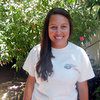
Evolutionary Morphology
Few observations in biology arouse as much curiosity as those on the shape, function, and mechanics of morphological structures. Evolutionary morphology embraces the “how” of morphology, such as the mechanics of how an animal can bite into a hard object with extraordinary force without knocking out its own teeth or shattering them. It also embraces the “why” of morphology, retracing the patterns of evolution in features to understand how a few basic morphological patterns gave rise to the stunning diversity we see in groups from molluscs to mammals to plants. The “how” and the “why” combine to reveal the ways in which organismal evolution has transformed structures and promoted novel functions as well as patterns of association between morphological features and either geographic area or habitat.
Faculty1
Gregory M. Erickson
My primary area of interest is evolutionary morphology, with the major focus on the form, function, development, and evolution of the vertebrate musculo-skeletal system.
Austin R. Mast
My research program involves topics within the broadly defined area of biodiversity study. I am particularly interested in (1) the interplay of ecology and evolution that determines the form and function of plant life on Earth, (2) the use of biodiversity research specimens and digital information about them to bring that interplay into sharper focus, and (3) public engagement in the research to further science and STEM literacy goals.
Scott J. Steppan
I seek to understand the origin of biological diversity. We study the evolution of morphological traits, whether for reconstructing phylogenies, biomechanical studies, quantifying the patterns of morphological diversity (disparity) over time in as clades evolve, or the underlying patterns of correlations among traits.
Department of Scientific Computing Faculty2
1: Can mentor graduate students in the Department of Biological Science
2: Cannot mentor graduate students in the Department of Biological Science


